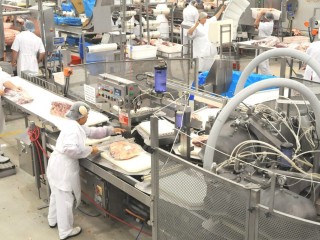 Renewed currency pressures and listless export beef demand produced another 5 percent decline in national slaughter rates last week, and early evidence of business closures.
Renewed currency pressures and listless export beef demand produced another 5 percent decline in national slaughter rates last week, and early evidence of business closures.
The NLRS slaughter report issued late yesterday afternoon for the week ended Friday, July 22 posted an adult kill figure of 115,272 head, down from an already low 121,199 head a week earlier.
The report covers the three major eastern beef producing states plus South Australia and Tasmania.
Queensland, which is responsible for about half of the nation’s processing capacity, slumped badly again – down 8pc from a week earlier to 61,036 head. One senior processing industry stakeholder said the number was probably the lowest weekly kill recorded in Queensland in July for the past decade.
“It’s normally full bore until the end of July,” he said.
Queensland’s figure was down 21pc on the kill for the same week last year, and the result came despite a restoration of the normal complement of abattoirs across the state, following the re-opening of the JBS Beef City plant near Toowoomba after a fortnight lay-off.
A significant number of Queensland plants only killed three or four days last week and were heading the same way this week.
One substantial processor of grainfed cattle will plan its August kill during meetings tomorrow, but did not sound hopeful of maintaining full weekday shifts, let alone weekend kills next month.
The company typically buys much of its kill forward, and was this week processing grainfed ox it had purchased for 395c/kg three or four months ago, a source said. The processor was still offering 350c/kg forward three months from now, however.
Slaughter rates in southern states were little better last week. Numbers in NSW were down 3pc for the week, and 6pc on the same period last year, to 33,112 head. Victoria’s numbers were up 2pc to 16,992, while Tasmania was +1pc (but down 17pc on last year) to 3413 adult cattle.
In South Australia, the Teys Naracoorte export plant remained closed, with a weekly kill of only 719 head, down 82pc on the same week last year.
Dollar looking grim
As if things could not get much worse, there are signs looming today that the A$ might be heading for another big rally against the US$ in coming days. The A$ lifted well above US108c yesterday, and opened at US108.46c this morning. Processors were fearful that bad economic news out of the US in the past 36 hours could send the Australian currency skywards.
That would further cripple Australia’s already limited price competitiveness for beef in international markets.
“There’s a lot of apprehension about where the currency might be heading in coming days, as investors seek shelter from US currency and head for safe havens like Australia, or gold,” one processor said.
Businesses start to fail
First signs of business collapse from recent chronic trading conditions are also starting to emerge.
Q-Exports, a well-known and respected non-packer exporter operated over the past decade by Simon Quilty out of Wangaratta, has collapsed, with a number of creditors owed substantial funds.
Currency movements and extremely tight margins across the processing/exporting sector generally were blamed for the business’s demise, which relied heavily on trade into the US market, and featured some highly innovative marketing ideas.
“Non-packer exporters take market positions – that’s part of their business. If they read the market correctly, all is well, but in extraordinary circumstances like these, it can extract a heavy toll. People who have been in this business for 40 or 50 years are under great financial strain,” one respected export stakeholder said yesterday.
Another red meat export casualty has been the Castricum Brothers business in Victoria, which announced recently that it will no longer operate in export markets, instead concentrating on domestic wholesale supply only. While the Castricum abattoir has not operated for some time, the company has been doing service kills in other plants, but has now given that up also. At one point Castricum had a large export beef and lamb business out of Dandenong.
“This is a very low-margin business to begin with. When you add elements like import duties – 9pc in Indonesia, 40pc in Korea, 38pc in Japan – plus the high dollar, and new AQIS charges on meat inspection that will add millions to many processors’ costs each year, this current environment could take a very heavy price on the industry,” a respected Queensland export processor/wholesaler said.
He said there was some evidence of clearance of large stocks of beef currently held in domestic cold storage, but there was still a very long way to go.
The big build-up of meat in cold stores as a result of the difficulty in selling meat into sluggish Japanese and US export markets was still weighing heavily on the overall trade, and the dollar rising would just put more pressure on that problem again, he said.
One retailer with a string of successful butcher shops around regional Queensland said his meat sales were currently down 25 percent, due to the flat state of the domestic economy.
Offering whole cube roll specials out of storage at a bargain $9.99/kg had had some impact in attracting customers back into his shops, but making a bulk purchase meant they might not come back for a week, he said.
- The Eastern Young Cattle Indicator closed yesterday at 377.5c, up 1c from a week earlier.
